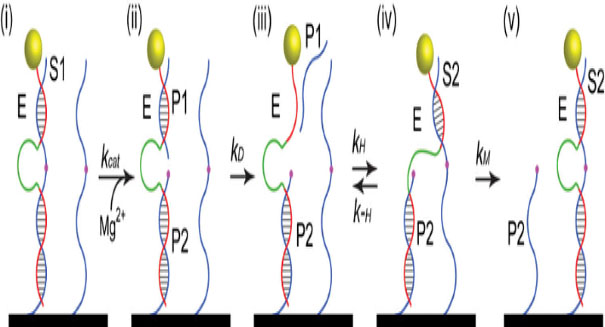
Early-stage research could have a major impact on drug delivery in the near future
Natural biological “motors,” made of protein, have been around for some time now. However, their applications are limited. They cannot be controlled, and they cannot exist outside of their natural environments. In light of that, scientists are working on a controllable motor made of DNA, capable of transporting a small particle.
Jong Hyun Choi, a Purdue University assistant professor of mechanical engineering, and his team are in the process of developing these motors based on the genetic materials in cells that consist of a sequence of four chemical bases: adenine, guanine, cytosine and thymine. In coming decades, such molecular motors might find uses in drug delivery, manufacturing and chemical processing.
“We are in the very early stages of developing these kinds of synthetic molecular motors,” Choi said.
The versatility of the new DNA motors were shown off in a demonstration, where the motor “walked” along the length of a carbon nanotube while carrying a nanoparticle. In the accompanying illustration, the walking motion looks similar to tossing a ball to themselves as the nanoparticle is advanced, followed by the core of the motor catching up. As it moves along a carbon-nanotube track it continuously harvests energy from strands of RNA, molecules vital to a variety of roles in living cells and viruses. The upper arm of DNA moves forward, binds with the next strand of RNA, and then the rest follows.
“Our motors extract chemical energy from RNA molecules decorated on the nanotubes and use that energy to fuel autonomous walking along the carbon nanotube track,” Choi said.
The researchers combined two fluorescent imaging systems to document the motor’s movement, one in the visible spectrum and the other in the near-infrared range. The nanoparticle is fluorescent in visible light and the nanotubes are fluorescent in the near-infrared. Together, they form a complete image.
Compared to natural motors, the DNA version is no speed demon: It took about 20 hours to traverse the length of the nanotube, which was “several” microns in length. The researchers believe this process could be improved by tinkering with the temperature and pH.
The Nature Nanotechnology paper was authored by graduate students Tae-Gon Cha, Jing Pan and Haorong Chen; former undergraduate student Janette Salgado; graduate student Xiang Li; Chengde Mao, a professor of chemistry; and Choi.
Leave a Reply